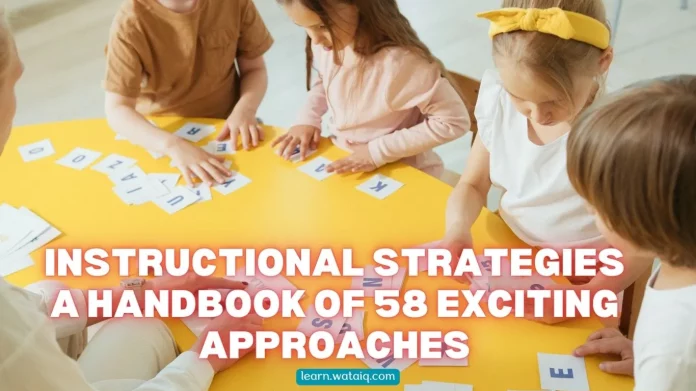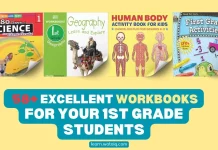Diversifying your teaching approach is a powerful method to engage and challenge your students. This not only enriches their learning experience but also cultivates independence. In this handbook, we present 53 instructional strategies categorized into three distinct classifications. These classifications encompass a wide range of interactive, assessment and feedback, as well as language and literacy strategies. Each category offers unique approaches to cater to various learning styles and ages. Dive into this compilation and discover the next valuable addition to your teaching toolkit!
Instructional Strategies for Enhanced Learning
Table Of Contents
- 1. Think-Pair-Share
- 2. Jigsaw Learning
- 3. Graphic Organizers
- 4. Role Play
- 5. Station Teaching
- 6. Socratic Seminar
- 7. Peer Tutoring
- 8. Project-Based Learning
- 9. Inquiry-Based Learning
- 10. Mnemonic Devices
- 11. Flipped Classroom
- 12. Virtual Field Trips
- 13. Exit Tickets
- 14. Cooperative Learning
- 15. Hands-on Activities
- 16. Guided Reading
- 17. Brain Breaks
- 18. Analogies
- 19. Fishbowl Discussions
- 20. Goal Setting
- 21. Reciprocal Teaching
- 22. Mind Mapping
- 23. Choice Boards
- 24. Differentiated Instruction
- 25. Silent Discussions
- 26. Gamification
- 26. Gamification
- 28. Self and Peer Assessment
- 29. Modeling
- 30. Debate
- 31. Reflective Journals
- 32. Questioning
- 33. Instructional Strategies: Concept Maps
- 34. Cue Cards
- 35. Group Investigation
- 36. Instructional Strategies: Word Walls
- 37. Convergent and Divergent Thinking
- 38. Instructional Strategies: Vocabulary
- 39. Visualization
- 40. Note-Taking Skills
- 41. Independent Study
- 42. Microlearning
- 43. Metacognition
- 44. KWWL Chart
- 45. Case Studies
- 46. Instructional Strategies: Activators
- 47. Multisensory Learning
- 48. Anchor Charts
- 49. Mathematical Problem-Solving
- 50. Instructional Strategies: Storytelling
- 51. Instructional Strategies: The Muddiest Point
- 52. Instructional Strategies: Summarizing
- 53. One-minute Response
- Final Thought: Instructional Strategies

Enhance critical thinking with Think-Pair-Share. Begin with individual reflection, followed by paired discussions, and finally, share insights with the entire class. This collaborative approach promotes active participation and diverse perspectives.
Learn More: Lams Learning Medium
2. Jigsaw Learning

Transform learning into an expert exploration with Jigsaw Learning. an instructional strategy where students delve into distinct subtopics, becoming experts before reuniting to share knowledge. This cooperative strategy fosters comprehensive understanding and teamwork.
Learn More: Learning Currents
3. Graphic Organizers

Cater to visual learners using Graphic Organizers. Whether employing flow charts, Venn diagrams, or mind maps, these tools unlock a world of understanding, helping students organize and connect information effectively.
Learn More: Very Well Family
4. Role Play
Immerse students in learning through Role Play. By embodying historical figures or abstract concepts, learners connect with content on a deeper level. This immersive strategy ensures a lasting impact on their understanding.
Learn More: YouTube
5. Station Teaching

Turn your classroom into a knowledge relay with Station Teaching. Rotate students through different activity stations, transforming every corner into a unique learning adventure. Completing tasks at each station fosters a sense of accomplishment and engagement.
Learn More: UFT
6. Socratic Seminar

Cultivate student-led discussions with Socratic Seminars. Ideal for older students, this platform sharpens questioning, critical thinking, and dialogue skills. Encouraging formal discussions empowers learners to actively listen and engage in thoughtful debates.
Learn More: eSchool News
7. Peer Tutoring

Empower students by letting them take on teaching roles through Peer Tutoring. Whether one-on-one or in small groups, this strategy flips traditional classroom dynamics, fostering collaborative learning and reinforcing understanding.
Learn More: Emergent Tutoring
8. Project-Based Learning

Unleash curiosity with Project-Based Learning. Encourage self-guided research by initiating projects with intriguing questions or challenges. Witness your students become enthusiastic researchers, navigating the seven steps of their project independently.
Learn More: Literacy In Focus
9. Inquiry-Based Learning

Transform classrooms into detective agencies with Inquiry-Based Learning. Encourage students to don investigator hats, engaging in probing, exploring, and experimenting to discover answers. This strategy fuels their excitement for learning.
Learn More: Teacher PH
10. Mnemonic Devices
Elevate memory retention with Mnemonic Devices. Teach students memory-boosting techniques like ROYGBIV for the colors of the rainbow or encourage them to create their own. This creative strategy enhances learning in a memorable way.
Learn More: YouTube
11. Flipped Classroom
Embrace role reversal with the Flipped Classroom. Shift homework to an engaging film festival of educational videos, allowing more classroom time for practical application and feedback. This innovative strategy maximizes in-class learning experiences.
Learn More: YouTube
12. Virtual Field Trips

Break classroom confines with Virtual Field Trips. Leverage technology to transport students to distant places via museum virtual tours. This immersive strategy broadens horizons without leaving the comfort of the classroom.
Learn More: The Journal
13. Exit Tickets

Bid adieu to each class thoughtfully with Exit Tickets. Distribute these prompts five minutes before dismissal, encouraging students to reflect on the day’s learning. Their responses shape future lesson plans.
Learn More: The Art Of Education
14. Cooperative Learning

Harness the power of unity with Cooperative Learning. Have students work together towards common goals, promoting teamwork and collaboration. Thoughtful task planning ensures a successful implementation of this strategy.
Learn More: Continental Press
15. Hands-on Activities

Transform abstract concepts into tangible knowledge through Hands-on Activities. Recognize the power of experiential learning, as students grasp complex ideas more efficiently through engaging, interactive experiences.
Learn More: Begin Learning
16. Guided Reading

Foster a lifelong love for reading with Guided Reading sessions. Navigate through pages together, unraveling the beauty of words. Use these sessions not only for reading skills but also to develop deeper comprehension and questioning abilities.
Learn More: Learning A-Z
17. Brain Breaks

Infuse fun into learning with Brain Breaks. These short, enjoyable activities reenergize students, breaking up monotony, and refocusing their minds after recess. Keep the excitement alive between lessons.
Learn More: Twinkl
18. Analogies

Simplify complex concepts for learners with Analogies. Relate abstract ideas to everyday situations, providing a clearer understanding. This strategy aids in visualizing challenging content.
Learn More: Language Tool
19. Fishbowl Discussions

Encourage diverse viewpoints through Fishbowl Discussions. Some students actively discuss while others observe, and then they switch roles. This method ensures active engagement and thoughtful consideration of different perspectives.
Learn More: Slide Player
20. Goal Setting
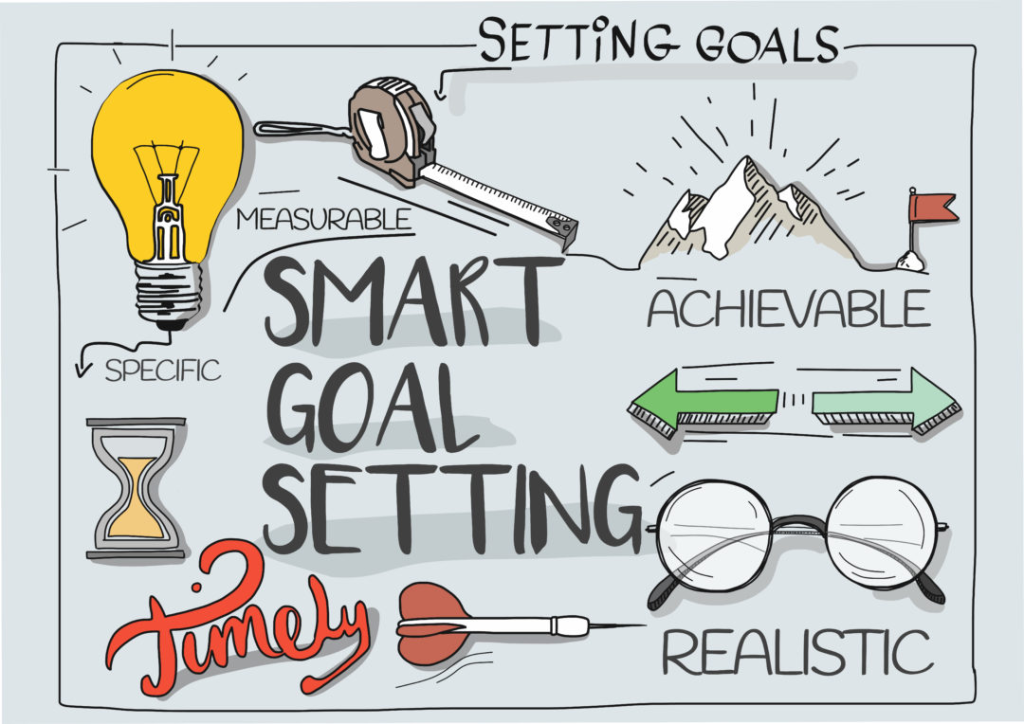
Empower students to chart their academic journey with Goal Setting. Encourage them to set and track their own goals, fostering self-directed learning. Regular reflection ensures motivation and progress assessment.
Learn More: Kison
21. Reciprocal Teaching
Infuse variety into your classroom routine with Reciprocal Teaching. As students rotate and take on different discussion roles, they delve deep into understanding and questioning, creating a rich group dynamic.
Learn More: YouTube
22. Mind Mapping

Merge learning and artistry with Mind Mapping. Perfect for broadening knowledge, recalling information, and fostering creativity. The visual representation aids in making connections between topics and organizing information effectively.
Learn More: Mind Mapper
23. Choice Boards
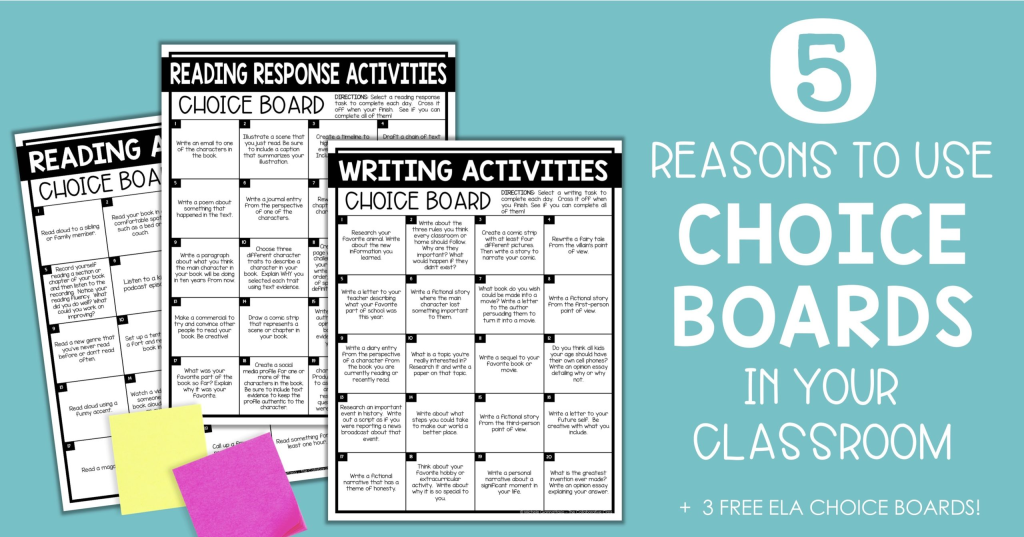
Transform learning into a menu of activities with Choice Boards. Students explore a buffet of tasks, building skills across various learning areas. Print the boards and let students tick off activities one by one.
Learn More: The Collaborative Class
24. Differentiated Instruction

Acknowledge the uniqueness of every learner with Differentiated Instruction. Tailor teaching to diverse capabilities, employing a range of strategies to ensure every student thrives in their learning journey.
Learn More: Structural Learning
25. Silent Discussions

Foster written dialogue through Silent Discussions. This engaging activity prompts dynamic idea exchange, recording all contributions for future discussion. The silent aspect adds an intriguing layer to student interaction.
Learn More: David Rickert
26. Gamification
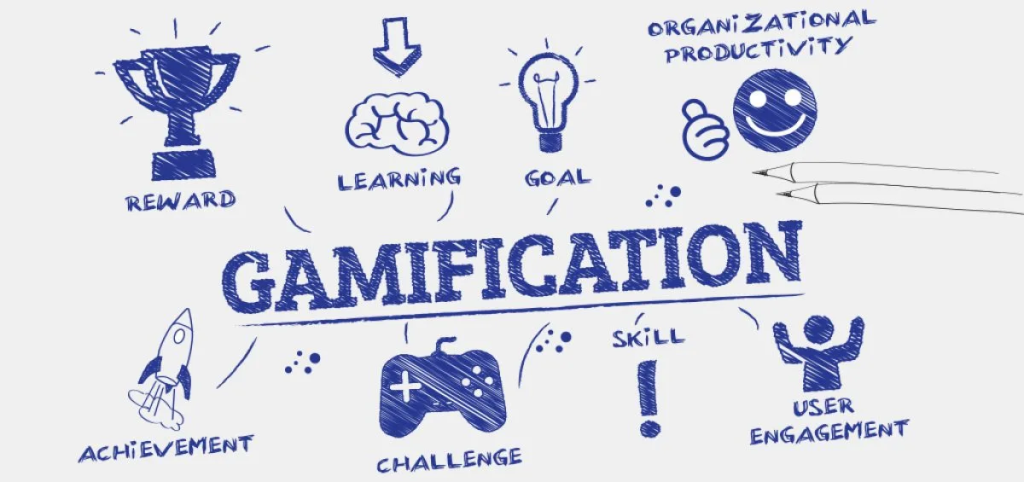
Infuse excitement into lessons with Gamification. Turn learning into captivating quests, sparking friendly competition. This strategy allows students to apply knowledge in a fun and challenging context.
Learn More: Hurix
26. Gamification
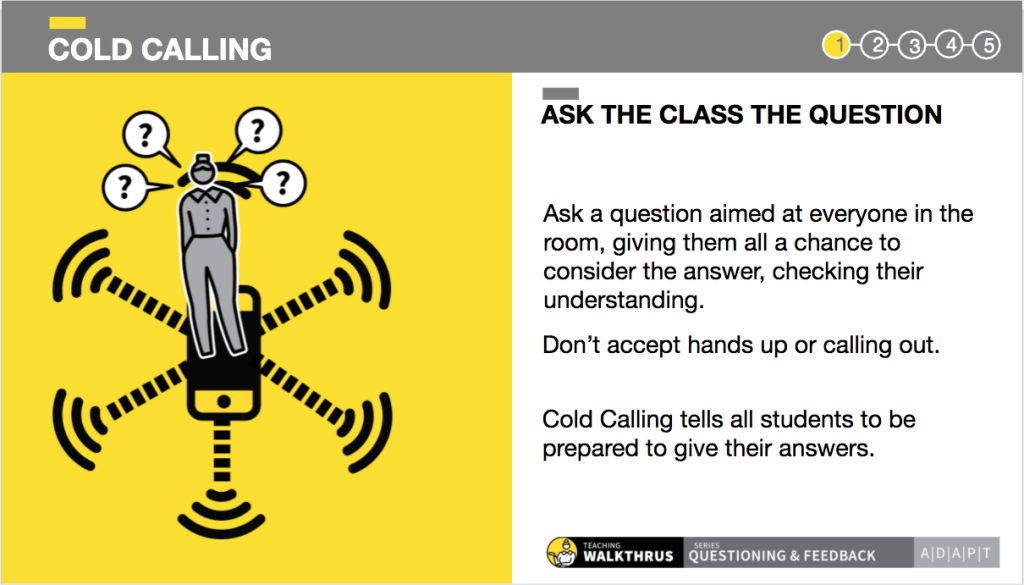
Make learning inclusive with Cold Call. Pose random questions, giving various students the chance to explain their reasoning. This approach keeps everyone engaged and encourages participation.
Learn More: Teacher Head
28. Self and Peer Assessment
Promote reflection and reduce marking with Self and Peer Assessment. Encourage students to assess and provide feedback on each other’s work. This collaborative approach fosters a culture of constructive feedback and shared growth.
Learn More: YouTube
29. Modeling

Guide students step-by-step through a process or skill using Modeling. This clear and deliberate demonstration reduces errors, alleviates monotony, and addresses gaps in understanding. By showcasing various approaches, you empower students to choose the method that resonates most with their learning style.
Learn More: Teach Hub
30. Debate

Ignite intellectual curiosity with Debates. Encourage students to unleash critical thinking and persuasive skills by engaging in friendly debates. Select intriguing topics that fuel discussion and let students articulate their viewpoints, enhancing content comprehension.
Learn More: Youth Incorporated Magazine
31. Reflective Journals

Cultivate self-awareness through Reflective Journals. Invite students to journal their thoughts and feelings about their school day and learning journey. This practice promotes introspection, helping students recognize strengths and areas for improvement.
Learn More: Wellman Psychology
32. Questioning
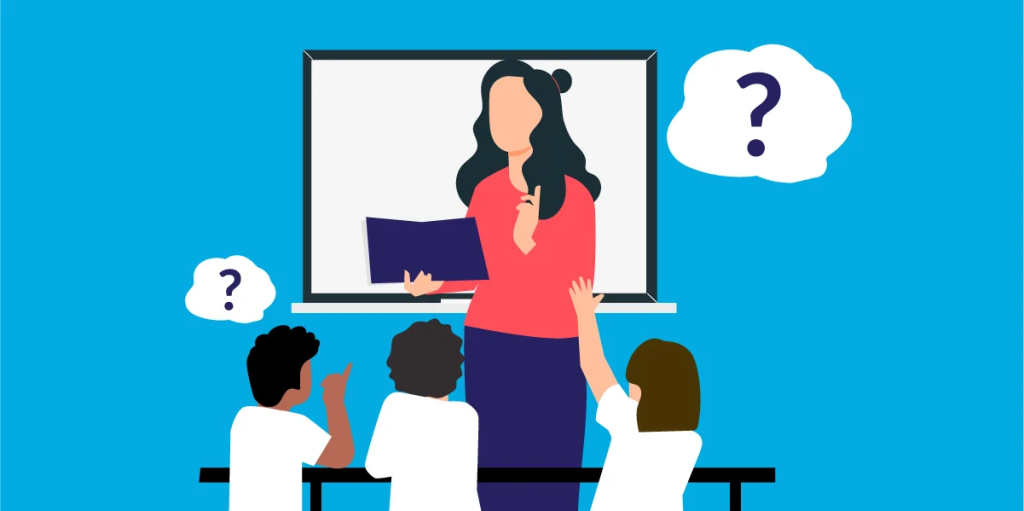
Elevate learning with strategic Questioning. Craft broad, thought-provoking questions that encourage students to deepen their thinking and establish connections within their learning. Thoughtful inquiries stimulate curiosity and promote active engagement.
Learn More: IRIS Connect
33. Instructional Strategies: Concept Maps

Visualize understanding through Concept Maps. Encourage students to draw connections, depicting relationships and significant elements. This visual representation aids in clarifying complex concepts before progressing to more intricate content.
Learn More: LSC Cornell
34. Cue Cards
Simplify revision with Cue Cards. These straightforward cards, featuring questions, prompts, or facts, facilitate effective review and discussion. Whether provided by the teacher or created by students, cue cards serve as valuable aids in reinforcing key concepts.
Learn More: YouTube
35. Group Investigation

One of the best instructional strategies: Merge collaboration and exploration with Group Investigation. Assign diverse topics to small groups, prompting in-depth investigations and insightful presentations. This hands-on approach empowers students to take charge of their learning and share newfound knowledge with peers.
Learn More: Steemit
36. Instructional Strategies: Word Walls

Transform classroom walls into dynamic resources with Word Walls. Visual glossaries featuring spelling words, commonly misspelled words, or topic-related terms serve as constant references. These interactive displays enhance vocabulary retention and support ongoing learning.
Learn More: Edutopia
37. Convergent and Divergent Thinking

Cultivate higher-level thinking with Convergent and Divergent Thinking. Challenge students by providing prompts that elicit diverse responses (divergent thinking) or singular solutions with complete data sets (convergent thinking). This dynamic approach develops critical thinking skills.
Learn More: Prodigy Game
38. Instructional Strategies: Vocabulary
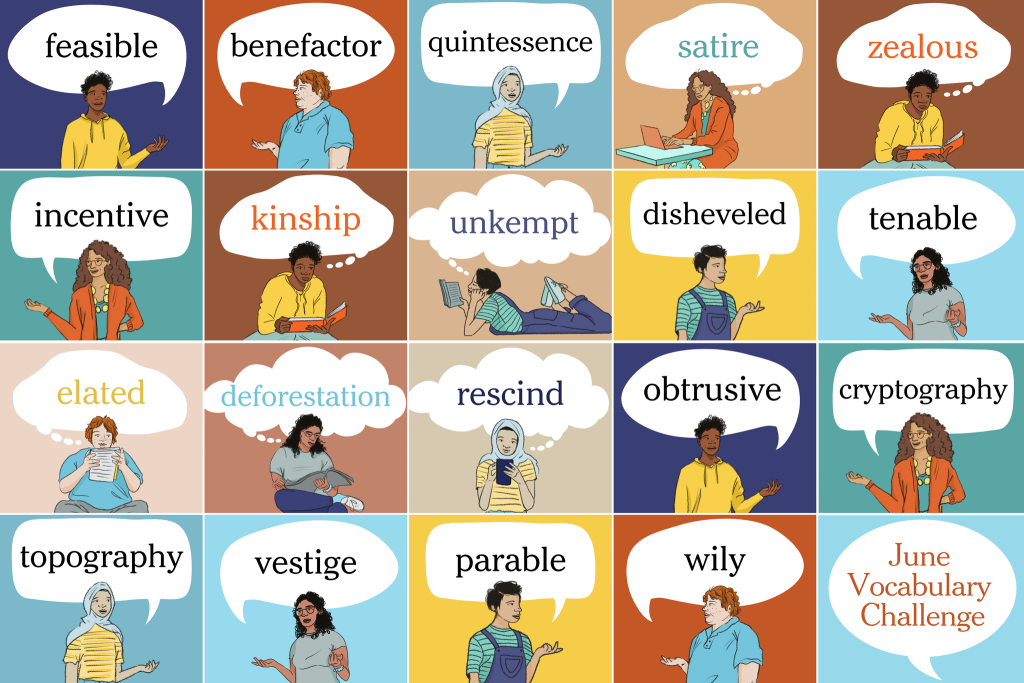
Mastering both common and subject-specific vocabulary is paramount. Incorporate new words into daily routines, preview terms, include them in instructions, review consistently, and model their use in discussions. This multifaceted strategy ensures comprehensive vocabulary acquisition.
Learn More: EL Education
39. Visualization
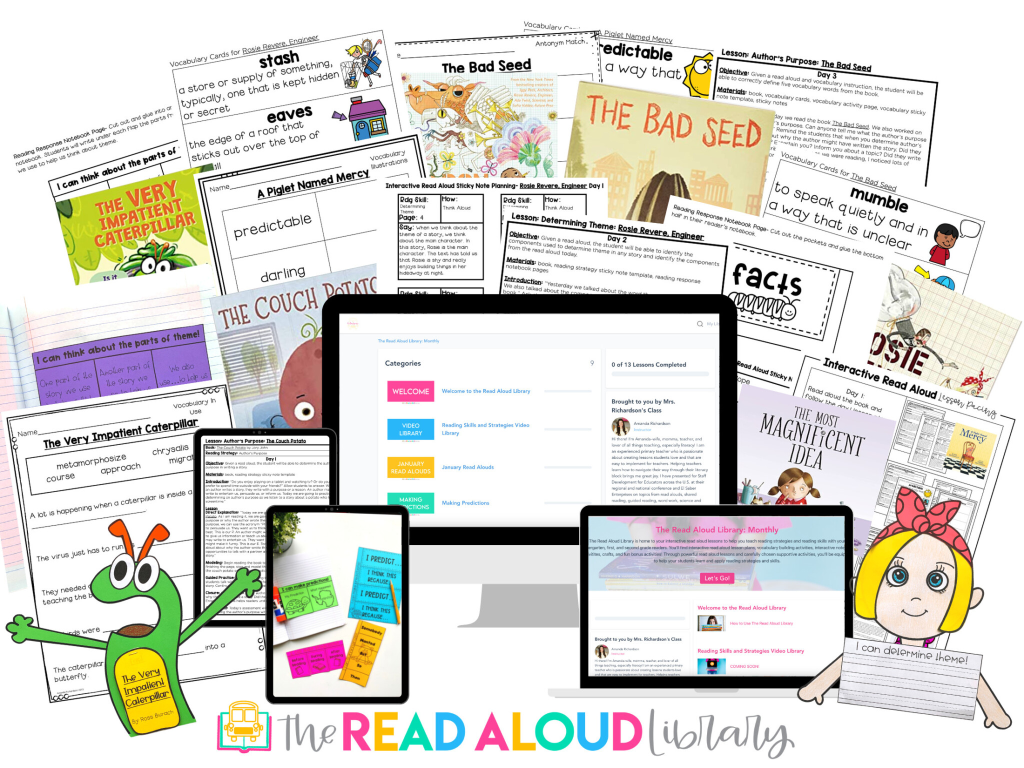
Appeal to visual learners through Visualization. Utilize graphs, images, videos, and mind maps to solidify information in long-term memory. This multisensory approach caters to diverse learning styles, making complex concepts more accessible.
Learn More: Mrs. Richardson’s Class
40. Note-Taking Skills

Cultivate essential Note-Taking Skills for lifelong learning. Recognize that one technique doesn’t fit all; introduce various methods such as summarizing, bullet points, or visual aids. Empower students to establish note-taking habits aligned with their individual preferences.
Learn More: Read And Spell
41. Independent Study

Foster autonomy through Independent Study. Provide opportunities for self-directed learning, especially as students progress through school. This approach spans online learning, research projects, and apprenticeships, cultivating self-motivation and responsibility.
Learn More: University Of Waterloo
42. Microlearning

Capture attention in the digital age with Microlearning. Break content into digestible pieces, creating highly accessible and engaging lessons. This strategy accommodates shorter attention spans, allowing seamless transitions from one mini-lesson to the next.
Learn More: Open Stax
43. Metacognition
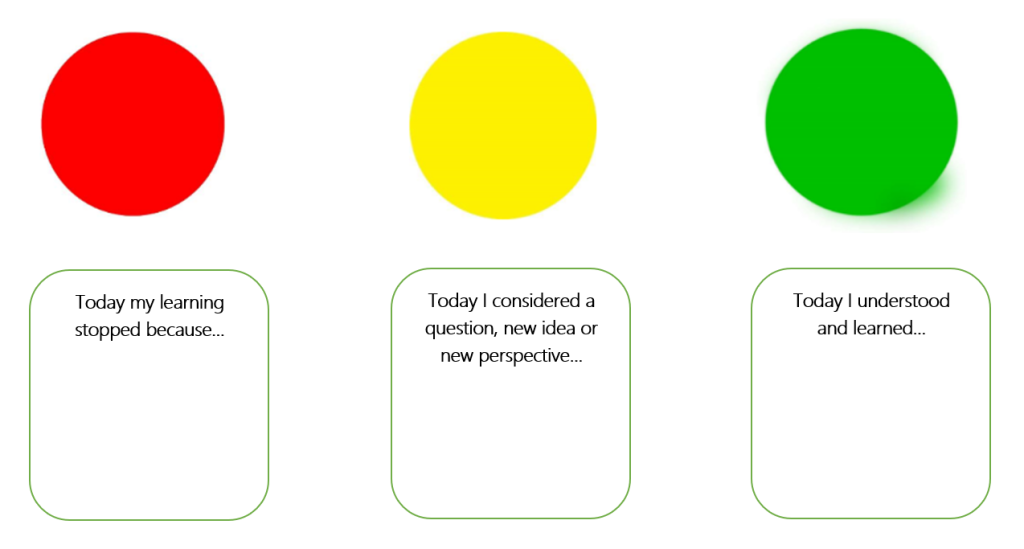
Demystify thought processes through Metacognition. Share internal reflections with students, articulating thinking in real-time. This practice equips students with the tools to develop their own metacognitive skills, enhancing self-awareness and learning efficiency.
Learn More: Brookings
44. KWWL Chart

Enhance note-taking with the KWWL Chart. This updated tool includes sections for students to locate information sources, from books to anchor charts to websites. Empower students to organize information effectively, promoting comprehensive understanding.
Learn More: Ms. Francine’s Website
45. Case Studies

Illustrate real-life applications of concepts with Case Studies. Provide detailed examples focused on individuals or locations, encouraging students to apply their knowledge in meaningful and engaging ways. Case studies deepen understanding and bridge theoretical concepts with practical scenarios.
Learn More: Boston University
46. Instructional Strategies: Activators

Elevate the introduction of new concepts with Activators. Employ brainstorming, quick writes, or icebreakers to prompt students’ thinking before content presentation. This strategy primes students for learning, fostering active engagement from the outset.
Learn More: Comprehension Connection
47. Multisensory Learning

Enrich learning experiences through Multisensory Learning. While many concepts are traditionally conveyed through written or spoken words, incorporating additional senses strengthens foundational information retention. This approach enhances long-term understanding and engagement.
Learn More: Lexicon Reading Center
48. Anchor Charts

Introduce topics effectively with Anchor Charts. These vibrant instructional tools, prominently displayed in the classroom, serve as constant references. Utilize anchor charts at the beginning of new topics to provide visual guidance and facilitate interactive learning.
Learn More: Teach Simple
49. Mathematical Problem-Solving
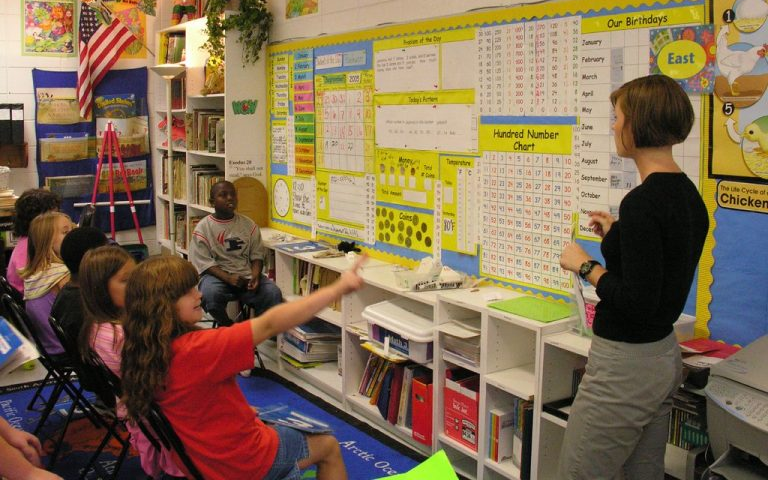
Deepen mathematical understanding with real-world problem-solving. Incorporate practical scenarios to help students grasp foundational concepts, showcasing the relevance of mathematical skills in their future lives.
Learn More: Fort Hayes State University
50. Instructional Strategies: Storytelling

Harness the timeless appeal of stories across all grade levels and subjects. Use storytelling as a captivating “hook” for lessons or units, sparking enthusiasm and curiosity among students. This versatile strategy fosters a love for learning through narrative engagement.
Learn More: Waterford
51. Instructional Strategies: The Muddiest Point
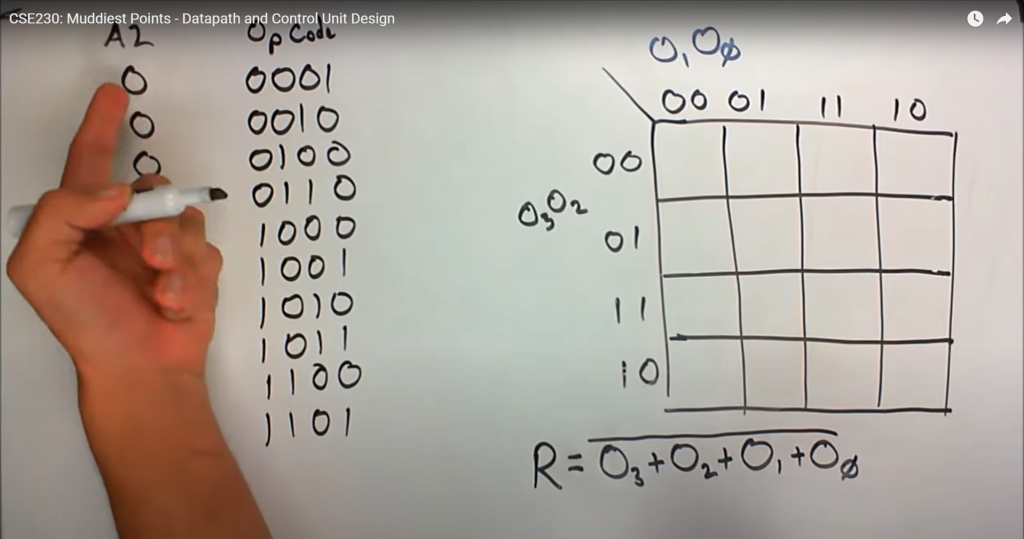
Incorporate formative assessment with The Muddiest Point. Prompt students to identify the concept causing confusion. This valuable feedback guides lesson planning, addressing specific challenges and ensuring a more targeted and effective teaching approach.
Learn More: Learning And Teaching Hub
52. Instructional Strategies: Summarizing

Develop essential summarization skills in students. As they navigate an abundance of information, encourage them to distill complex concepts into concise, understandable summaries. This skill promotes deeper understanding and effective communication of learned material.
Learn More: Happy Teacher Momma
53. One-minute Response

Efficiently gauge understanding and gather quick feedback with One-minute Responses. Provide a clear prompt, and allocate a focused minute for students to articulate their immediate thoughts or reactions. This strategy not only checks comprehension but also encourages concise expression and active participation.
Learn More: Faculty Focus
Final Thought: Instructional Strategies
The spectrum of instructional strategies presented in this comprehensive guide reflects the richness and diversity that educators can leverage to enhance the learning experiences of their students. From collaborative approaches like Think-Pair-Share to immersive methodologies such as Role Play, each strategy offers a unique pathway to engage learners and promote deeper understanding. The integration of technology, hands-on activities, and student-centered approaches underscores the dynamic nature of contemporary education. As educators explore and adapt these strategies, they have the opportunity to create vibrant and inclusive learning environments that cater to diverse learning styles, fostering a lifelong love for learning among students.
